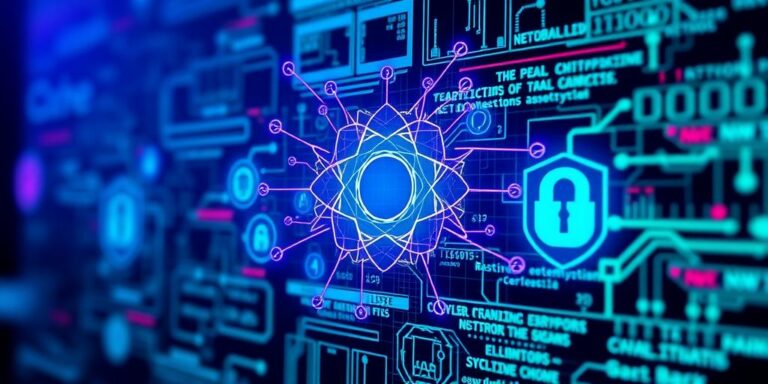Preparing Your Organization for the Quantum Cybersecurity Shift (2025 Guide)
The year is 2025. Quantum computers, once a theoretical threat, are now a tangible reality. Their unprecedented computational power poses a significant risk to current cybersecurity infrastructure, demanding a proactive and comprehensive shift in how organizations protect their data and systems. This guide provides actionable steps to prepare your organization for the quantum cybersecurity shift.
Understanding the Quantum Threat
Quantum computers leverage the principles of quantum mechanics to perform calculations far beyond the capabilities of classical computers. While offering immense potential for fields like medicine and materials science, they also threaten current encryption algorithms.
- Shor’s Algorithm: This quantum algorithm can efficiently break widely used public-key cryptography algorithms like RSA and ECC, which secure everything from online transactions to VPNs.
- Grover’s Algorithm: While not as devastating as Shor’s algorithm, Grover’s algorithm speeds up brute-force attacks, potentially weakening symmetric-key cryptography.
Key Steps for Quantum-Readiness
1. Assessment and Inventory:
- Identify critical data: Determine which data assets are most valuable and require the highest level of protection.
- Map cryptographic dependencies: Understand where and how your organization uses vulnerable cryptographic algorithms (RSA, ECC, etc.).
- Assess current security posture: Evaluate existing security controls and identify gaps in your defenses against quantum threats.
2. Embrace Post-Quantum Cryptography (PQC):
- Understand PQC algorithms: Familiarize yourself with the new generation of cryptographic algorithms designed to resist attacks from both classical and quantum computers. NIST (National Institute of Standards and Technology) has been leading efforts to standardize PQC algorithms.
- Pilot PQC implementation: Begin experimenting with PQC algorithms in non-critical systems to gain experience and identify potential challenges.
- Plan for migration: Develop a phased approach to migrate critical systems to PQC, prioritizing the most vulnerable and valuable data.
3. Hybrid Approaches:
- Combine classical and PQC: Implement hybrid cryptographic systems that use both classical and PQC algorithms. This provides a fallback in case one algorithm is compromised.
- Leverage quantum key distribution (QKD): Explore QKD for secure key exchange, especially for highly sensitive data. QKD uses the laws of physics to guarantee the security of the keys.
4. Enhance Key Management:
- Implement robust key management practices: Proper key generation, storage, and rotation are crucial for the security of any cryptographic system, including PQC.
- Consider hardware security modules (HSMs): HSMs provide a secure environment for storing and managing cryptographic keys.
5. Security Awareness and Training:
- Educate employees: Train employees about the quantum threat and the importance of adopting new security measures.
- Promote a security-conscious culture: Encourage employees to report suspicious activity and follow security best practices.
6. Collaboration and Information Sharing:
- Participate in industry forums: Engage with other organizations and cybersecurity experts to share knowledge and best practices.
- Stay informed about the latest developments: Continuously monitor the progress of PQC standardization and the evolution of quantum computing.
7. Regular Audits and Penetration Testing:
- Conduct regular security audits: Assess the effectiveness of your quantum-resistant security measures.
- Perform penetration testing: Simulate attacks to identify vulnerabilities and weaknesses in your systems.
Looking Ahead
The transition to quantum-resistant cybersecurity is a complex and ongoing process. By taking proactive steps now, organizations can mitigate the risks posed by quantum computers and ensure the long-term security of their data and systems. The 2025 guide serves as a starting point, but continuous learning, adaptation, and collaboration are essential for staying ahead of the evolving quantum threat landscape.
This paradigm shift requires a multi-faceted approach, combining technological upgrades with cultural shifts in security awareness. Organizations that prioritize quantum readiness will be best positioned to thrive in the evolving cybersecurity landscape.




